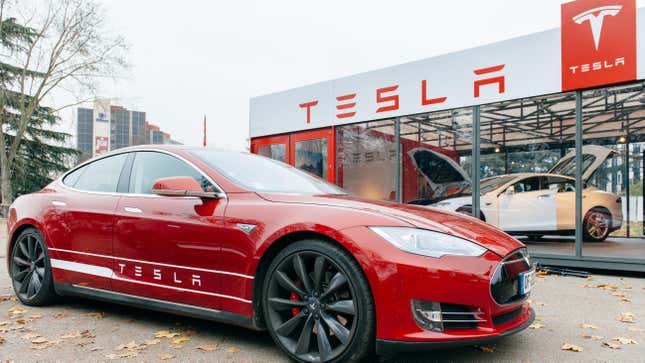
How much does a Tesla cost? The question seems straightforward, but Elon Musk’s electric vehicle company has been adjusting its prices so much this year, it’s a little hard to keep up.
In the most recent change, Tesla has cut its Model S and Model X prices by between 4% and 9% depending on the exact vehicle variant. Both Model S versions are now $5,000 cheaper—equal to a 5% decrease for the standard, which now costs $89,000. While the Model S’s higher performance “Plaid” variant is now $109,990, equal to a 4% decline.
The cuts to the Model X crossover SUV were even steeper—both versions have been slashed by $10,000. The standard is now $99,990, equal to a 9% cut. The
Plaid variant is now $109,990, equal to an 8% reduction.
The changes impact vehicles sold in the U.S. and are already in effect on Tesla’s website. They were first noted by company investors and others on Twitter.
Back in January, Tesla lowered its car prices in the U.S. and Europe by as much as 20% depending on vehicle model and location. Those earlier cuts impacted all of the company’s models, and if you include those changes, then the cost of a Model S or Model X has fallen by between 14% and 21% since the beginning of 2023, according to a report from Bloomberg.
The price changes come less than week after Tesla’s Investor Day and Musk’s presentation of the company’s “Master Plan 3.” During that event, the billionaire highlighted numerous cost reduction strategies Tesla had developed in its vehicle production process—making it cheaper for the company to manufacture its cars. Musk also indicated that earlier January price cuts had bolstered customer desire for vehicles. “We found that even small changes in the price have a big effect on demand, very big,” the CEO said.
Presumably, this most recent round of reductions is intended to increase demand, once again. Perhaps the boost in Model X and S orders didn’t meet expectations or match the appetite for the company’s other cars.
“The desire for people to own a Tesla is extremely high. The limiting factor is their ability to pay,” the CEO said. Musk added that the desire to own one of his company’s cars is “indistinguishable from infinite” and that, as Tesla lowers its prices demand will “go crazy.”
Though, even with thousands of dollars taken off Tesla price tags, the vehicles remain prohibitively expensive for most. The cheapest Tesla model, the Model 3, starts at $42,990. Compare that with the Chevy Bolt, Nissan Leaf, and Mini Cooper SE that are all under $30,000. And, with the rise of these truly affordable options, Tesla is facing increased market competition—with its longtime dominance under threat.
In the original, 2006 Tesla Master Plan, Musk promised that his company would work to produce progressively cheaper electric vehicles, making them accessible to a broad array of consumers. In recent years, the billionaire has hinted at a possible $25,000 Tesla EV—often referred to as the “Model 2.” However, that price point still seems to be very far off, and Musk offered no update on such a car as part of last week’s presentation.
Gizmodo reached out to Tesla for comment via Twitter and email, but the company did not immediately respond. Instead, Gizmodo received an emailed error message. “The recipient’s mailbox is full and can’t accept messages now. Please try resending your message later, or contact the recipient directly.” Tesla dissolved it’s public relations department back in 2020. Since then, the company has rarely replied directly to journalists’ questions.

